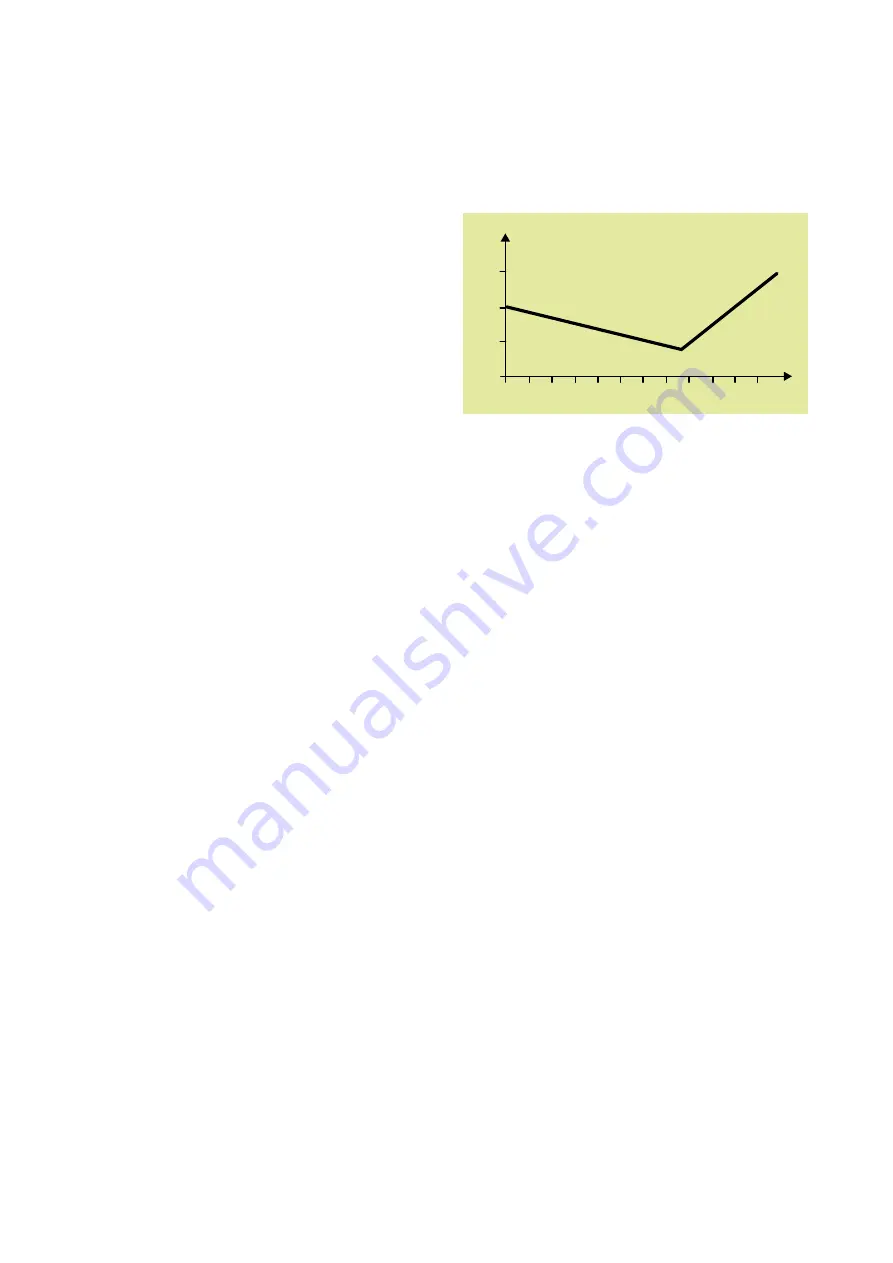
Fläkt Woods
8217 GB 2014.07.02 21
Specifications are subject to alteration without notice
TopMaster Air Handling unit
CONTROL AND REGULATION EQUIPMENT
Room control
Room control gives the best control of temperature in a
specific room and is used when only one unit serves this
room. This method works best for larger premises.
By replacing the exhaust temperature sensor with a
room temperature sensor placed in the room in question,
a good room temperature value is achieved.
This enables the unit to regulate the supply air tempe-
rature in a way that maintains the room temperature at a
desired level.
Limitation of the supply air temperature (min. temp.
and max. temp.) ensures that the supply air temperature
is maintained within the set range.
Default parameters for room control
1. Controller = 2
Selects cascade control
2. Cascade reference = 0 Selects room control
3. Cascade A = 0.5
When the sensor gets colder
than given setpoint value
4. Cascade B = –0.5
When the sensor gets hotter
than given setpoint value
5. Min. temp. = 15°C
Sets lowest supply air
temperature
6. Max. temp. = 25°C
Sets highest supply air tempe-
rature
Example
1. Setpoint = 18°C
2. Room temperature = 22°
This means that the new calculated setpoint for the supp-
ly air controller is:
Calculated setpoint = se (setpoint – room air tem-
perature) x cascade B = 18 – (18 – 22) x (–0.5) = 16°C.
Outdoor temperature compensation
The setpoint temperature for supply air can be adjusted
up or down depending on the outdoor temperature. By
setting a higher set point value both on cold winter days
and hot summer days indoors comfort is improved.
In summer, this will increase energy savings. Outdoor
temperature compensation can not be combined with ex-
tract air control or room control.
Default parameters for outdoor temperature
compensation
1. Controller = 2
Selects cascade control.
2. Cascade reference = 1 Selects outdoor temperature
compensation.
3. Cascade A = 0,05
When the sensor gets colder
than given setpoint value.
4. Cascade B = 0.03
When the sensor gets hotter
than given setpoint value.
5. Min. temp. = 15°C
Sets lowest supply air
temperature.
6. Max. temp. = 25°C
Sets highest supply air
temperature.
Control functions (cont.)
Setpoint
Outdoor temperature compensation
Outdoor temperature, °C
+30
+25
+20
+15
35
30
25
20
15
10
5
0
–5
–10
–15
–20
Example 1
1. Setpoint = 18°C
2. Outdoor air temperature = –2°C
This means that the new calculated setpoint for the
supply air controller is:
Calculated setpoint = se (setpoint – outdoor air
temperature) x cascade A = 18 + (18 –(-2)) x 0.05 = 19°C
Example 2
1. Setpoint = 18°C
2. Outdoor air temperature = 28°C
This means that the new calculated setpoint for the
supply air controller is:
Calculated setpoint = se (setpoint – outdoor air
temperature) x cascade B = 18 – (18 – 28)) x 0.30 = 21°C.
3. Freeze protection
Warning! Do not change these parameters unless it is
absolutely necessary. If the unit is misconfigured the
water coil can freeze up and cause water damage to
property.
Freeze protection is used during low outdoor tempe-
ratures to prevent the coil from freezing. When the unit
is stopped, the temperature in the water coil is maintai-
ned at the setpoint to keep the unit warm. If there is a
risk of freezing in the water coil the motorized valve is
controlled to open.
If the temperature drops below the adjustable limit
value an A-alarm is obtained, which then stops the unit.
4. Defrost function
The defrost function is used to prevent the rotor from
freezing. By measuring the pressure across the rotor it is
possible to verify when the rotor needs to be defrosted.
When the pressure over the rotor becomes too high it
activates a time delay before defrosting. Then defrosting
starts. When the pressure is below the given limit value it
starts a time delay. When the time delay has elapsed, the
defrosting stops
Defrosting is achieved by running the rotor section-
wise. Fan speeds are not affected.






































